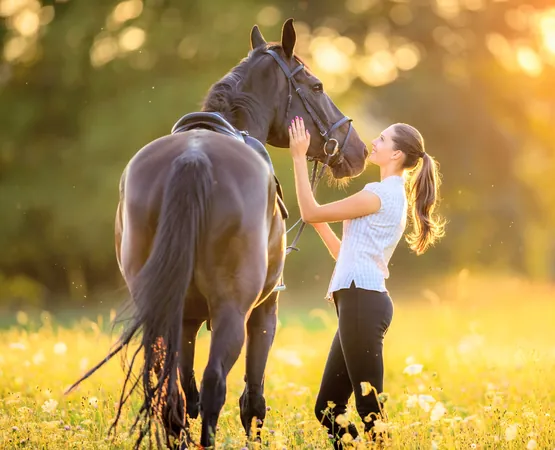
Unlocking the Secrets of Calm: How DNA Reveals the History of Horse Domestication
2025-08-31
Author: John Tan
The Genetic Blueprint of Calmness
The fascinating journey of how horses transformed into the calm companions we know today is etched in their DNA. A groundbreaking study has meticulously traced ancient horse genomes through millennia, linking specific genetic alterations to both behavior and physical traits.
The research sheds light on how early horse breeders prioritized temperament over time, eventually selecting for physical attributes that ensured endurance, speed, and the ability to handle long distances.
The Impact of Horses on Human Civilization
Led by Xuexue Liu from the Chinese Academy of Agricultural Sciences, this project highlights how horses revolutionized human life. From enhancing trade to changing warfare, the advent of the modern domestic horse approximately 4,000 years ago in the Western Eurasian steppes marked a pivotal moment in history.
As documented in a 2021 study, the rise of horse domestication catalyzed new means of transportation, laying the groundwork for chariot use and horseback riding—long before the invention of engines!
Understanding the Horse Genome
Utilizing an extensive analysis of horse DNA, researchers examined 266 genetic markers linked to behavioral and physical characteristics. They observed significant fluctuations in these markers as humans began to manage horse breeding more systematically.
The findings reveal that early selection was heavily focused on behavioral traits; trainable and steady horses undoubtedly made it easier for humans to pursue faster travel and engage in combat.
The Gene Behind Rideability
Among the notable discoveries, the GSDMC gene emerged as a key player in the development of rideability. This locus underwent significant selection roughly 4,750 years ago, marking a crucial shift in breeding practices.
By around 4,150 years ago, various GSDMC genetic variants had become ubiquitous in domesticated horse populations. This gene is connected to traits such as spinal anatomy and motor coordination, essential for successfully carrying a human across rugged terrain.
The Calm Before the Ride
The study also highlighted the ZFPM1 gene, which is associated with behavior modulation in mice, indicating that calmness may have been prioritized even before physical enhancements were made.
Successfully taming a large, fast, and skittish animal represented just the first challenge; once accomplished, humans could start refining horses for speed and strength.
Evolution of Breeding Practices
The research indicates a significant shift in breeding priorities following the initial domestication phase. After the Iron Age, there was a pronounced emphasis on larger body size and increased docility, aligning with the growing demands of transport and warfare.
This evolution corresponds with archaeological evidence of expanding cavalry forces and the use of heavier equipment.
The Insights Gained from DNA Analysis
Using a time series approach, researchers effectively captured snapshots of DNA across various epochs. Tracking allele frequencies over time helps illuminate the story of human-directed selection as opposed to natural genetic drift.
This dynamic research not only highlights crucial breeding changes over centuries but also provides insights into how GSDMC influences skeletal and muscular development—a vital aspect for rider comfort and animal welfare.
Looking to the Future
While the study narrows down the timeline of horse domestication, questions remain regarding which cultures first prioritized rideability in their breeding practices.
Future research could delve even deeper, identifying the most impactful genetic variants in GSDMC and investigating their effects on horse movement while also addressing the need to balance performance with the overall well-being of these majestic animals.
Published in the journal Science, this compelling study not only enhances our understanding of horse domestication but also prompts further ethical considerations in contemporary breeding.

 Brasil (PT)
Brasil (PT)
 Canada (EN)
Canada (EN)
 Chile (ES)
Chile (ES)
 Česko (CS)
Česko (CS)
 대한민국 (KO)
대한민국 (KO)
 España (ES)
España (ES)
 France (FR)
France (FR)
 Hong Kong (EN)
Hong Kong (EN)
 Italia (IT)
Italia (IT)
 日本 (JA)
日本 (JA)
 Magyarország (HU)
Magyarország (HU)
 Norge (NO)
Norge (NO)
 Polska (PL)
Polska (PL)
 Schweiz (DE)
Schweiz (DE)
 Singapore (EN)
Singapore (EN)
 Sverige (SV)
Sverige (SV)
 Suomi (FI)
Suomi (FI)
 Türkiye (TR)
Türkiye (TR)
 الإمارات العربية المتحدة (AR)
الإمارات العربية المتحدة (AR)